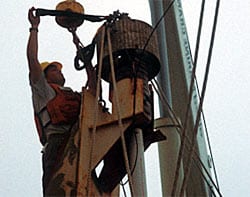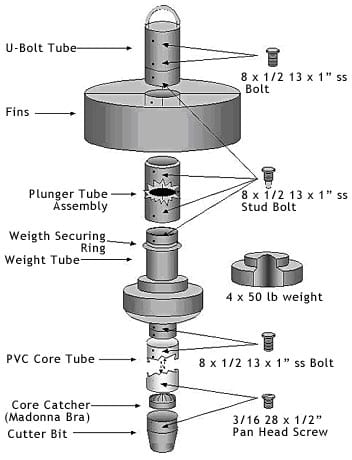Gravity Corer
What is it and why do we use it?
The gravity corer allows researchers to sample and study sediment layers at the bottom of lakes or oceans. It got its name because gravity carries it to the bottom of the water body. Recovering sediment cores allows scientists to see the presence or absence of specific fossils in the mud that may indicate climate patterns at times in the past, such as during the ice ages. Scientists can then use this information to improve understanding of the climate system and predict patterns and events in the future. Cores capture a time capsule that, in some cases, can span the past hundreds of thousands and even millions of years. Because sedimentation rates in some areas are quite slow, even a smaller corer a few meters in length may represent thousands of years of particles. These particles are a historical record of condition in the water column and in the atmosphere and can be used to reconstruct past conditions on Earth.
What platforms are needed?
To operate the gravity corer, users need a boat with a winch powerful enough to lower and raise the corer (it can be heavy, with have hundreds to thousands of pounds of lead weights attached). Users also need enough wire rope to reach the bottom of the water body.
Advantages and limitations?
Advantages:
It is simple, robust, and relatively reliable. There is little cost associated with it, it is extremely easy to use, and requires little maintenance.
Disadvantages:
It can be heavy and awkward to deploy and recover. Long cores must be lifted to a horizontal position and maneuvered over the rail to bring aboard the vessel.
Data produced
Scientists and students at the Sea Education Association on Cape Cod, Mass. do fairly simple analyses by looking at sub-samples from various levels in the core to determine color, angularity, grain size and type, and the presence of certain species of marine life. Researchers with more sophisticated scientific projects look at isotope ratios and other chemical signatures to answer paleo-oceanography questions.
Sources:
Encyclopedia of Ocean Sciences, vol. 1, p. 579-588
See Also
KC Denmark: small gravity corer
Manual and equipment list for a small gravity corer.


